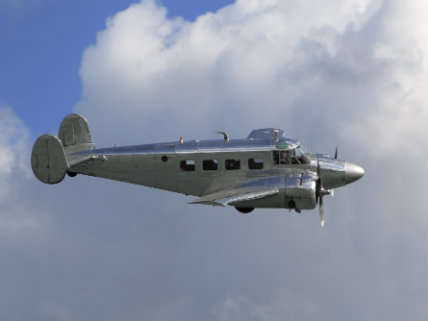Trump Budget Ends Subsidies for Rural Airports, Promising $175 Million in Savings
Cutting those subsidies makes a lot of sense, and could be done without cutting rural communities out of the nation's transportation networks.

Every year, taxpayers buy hundreds of tickets on otherwise empty flights from places like Ely, Nevada; Lewistown, Montana; and Paducah, Kentucky.
Those vacant seats are bought, at a cost of about $200 million annually, by the federal government as a way to subsidize twice-daily service to 175 rural airports that airlines may not otherwise choose to serve. President Donald Trump's first budget plan, released Thursday, would do away with those subsidies by shutting down the federal government's Essential Air Service program.
"EAS flights are not full and have high subsidy costs per passenger," the White House budget proposal states. "Several EAS-eligible communities are relatively close to major airports, and communities that have EAS could be served by other existing modes of transportation."
Eliminating the EAS is one part of an overall $2.4 billion budget reduction for the Department of Transportation proposed Thursday by the White House. Other budget savings would come from reducing subsidies for Amtrak, eliminating some local government grant programs, and privatizing the nation's 14,000 air traffic controllers.
It's hard to find any proposal in the budget that makes more sense than cutting the Essential Air Service program, which is anything but essential.
The EAS program has its roots in the deregulation of the airline industry in the late 1970s. Before deregulation, carriers were required to serve smaller, rural airports in order to obtain government permission to operate. After deregulation, the federal government created the Essential Air Service program to subsidize those rural routes so airlines would continue to serve them even without being required to do so. It was supposed to be a 10-year program to help those regional airports transition into the new deregulated air market.
More than 35 years later, it's still with us, another testament to the permanence of temporary government programs.
The Department of Transportation says there are 115 airports in the lower 48 states (and another 60 in Alaska) receiving subsidies through the program. Any airport more than 70 miles from another commercial airport is eligible for subsidies, which are capped at $200 per passenger. Airports in the EAS program get at least two round trips a day with 30- to 50-seat aircraft—although sometimes those planes have as few as nine seats, as Reason has previously reported—to nearby hub airports. Without the EAS subsides, the department says, those communities "would not receive any scheduled air service."
But those supposedly far-flung places won't be cut off from the rest of world if the EAS program were shuttered. In fact, many of them aren't so far-flung at all, and some might find better, more cost effective ways to get people where they need to go if the subsidies were killed.
For example, the airport in Hagerstown, Maryland, gets subsidies through the EAS program, even though it's less than a 90 minute drive from there to Dulles International Airport. Taxpayers pay more than $800 to subsidize each and every departure from Jonesboro Regional Airport in northern Arkansas, despite the airport being less than 70 miles from Memphis, Tennessee. It would be more cost effective to reimburse travelers leaving from Jonesboro or Hagerstown for the cost of fuel and mileage to drive to the larger airport.
Those two aren't unique. In all, 38 of the 153 airports subsidized through the EAS program are within 150 miles of another, larger airport. A 2011 report published by the Reason Foundation (which publishes this blog), the Natural Resources Defense Council, the American Bus Association, and Taxpayers for Common Sense found that 79,000 one-way flights leave those 38 airports year, carrying 615,000 passengers who pay $70 million in fares. The federal government's subsidies for those flights totals nearly $60 million.
Replacing those flights with a bus service to shuttle passengers to larger, nearby airports could save $89 million annually, the report found. Yes, buses don't travel as fast as places, but the average trip would be only 45 minutes longer on the ground than through the air, the study found.
That's fine for the EAS airports near bigger cities, but what about the rest? A 2009 report by the Congressional Budget Office suggested that states and local governments could pick up the tab for airport subsidies if they were truly essential to the local economy. In many places, such service might not be needed at all—or the number of flights could be reduced from two per day to perhaps a few flights each week, depending on demand. Indeed, some EAS-eligible airports operate with fewer than five passengers per day, the Government Accountability Office found in 2011.
Trump's budget, like all presidential spending proposals, is more of a political document than a fiscal roadmap. Congress gets the final say on federal spending, and, if history is any guide, we haven't heard the last from the EAS program. President George W. Bush tried three times to reduce or eliminate funding for it during the mid-2000s, only to be rebuked each time by Congress. Funding for the program actually increased during the Obama administration, from about $136 million annually to the current level of $200 million.
Cutting back on those subsidies—or eliminating them entirely, as Trump proposes—makes a lot of sense, and could be done without cutting rural communities out of the nation's transportation networks.


Show Comments (13)